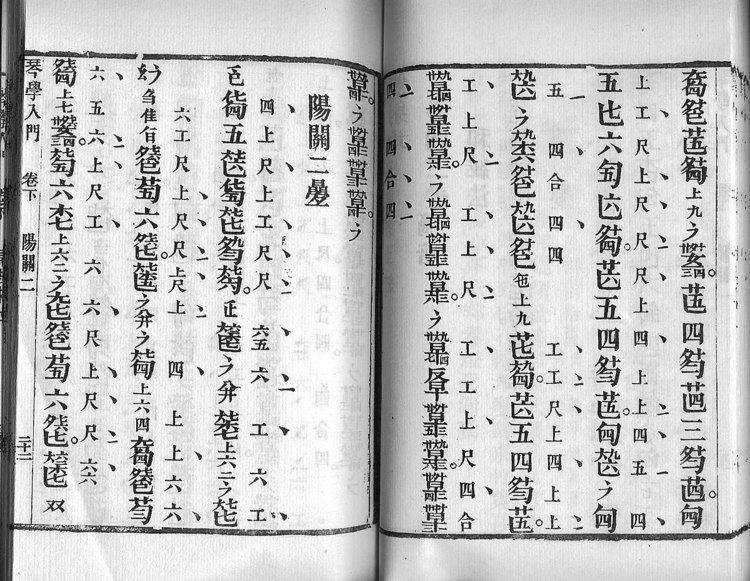Traditional Chinese 工尺譜 Hanyu Pinyin | Simplified Chinese 工尺谱 | |
 | ||
Gongche notation or gongchepu is a traditional musical notation method, once popular in ancient China. It uses Chinese characters to represent musical notes. It was named after two of the Chinese characters that were used to represent musical notes, namely "工" gōng and "尺" chě. Since the pronunciation chě for the character "尺" is uncommon, many people call it gongchi notation or gongchipu by mistake.
Contents
Sheet music written in this notation is still used for traditional Chinese musical instruments and Chinese operas. However the notation is becoming less popular, replaced by mostly jianpu (numbered musical notation) and sometimes the standard western notation.
Rhythm
Gongche notation does not mark the relative length of the notes. Instead, marks for the percussion, understood to be played at regular intervals, are written alongside with the notes. Gongche is written in the same format as how Chinese was traditionally written; from top to bottom and then from right to left. The rhythm marks are written to the right of the note characters.
The diagram at the left illustrates how the tune "Old McDonald Had a Farm" will look like if written in gongche notation. Here, "。" denotes the stronger beat, called "板" bǎn or "拍" pāi, and "、" denotes the weaker beat, called "眼" yǎn or "撩" liáo. In effect, there is one beat in every two notes, i.e. two notes are sung or played to each beat. These notes in solfege with markings will show a similar effect:
do do do sol la la sol mi mi re re doUsing this method, only the number of notes within a beat can be specified. The actual length of each note is up to tradition and the interpretation of the artist.
Notice that the actual rhythm marks used differ among various traditions.
History and usage
Gongche notation was invented in the Tang Dynasty. It became popular in the Song Dynasty. It is believed to have begun as a tablature of certain musical instrument, possibly using a fixed "do" system. Later it became a popular pitch notation, typically using a movable "do" system.
The notation is not accurate in modern sense. It provides a musical skeleton, allowing an artist to improvise. The details are usually passed on by oral tradition. However, once a tradition is lost, it is very difficult to reconstruct how the music was supposed to sound. Variations among different traditions increased the difficulty in learning the notation.
The system was also introduced to Korea (where it is referred to as gong jeok bo) in ancient times and many traditional musicians still learn their music from such scores (although they typically perform from memory).
Kunkunshi, a Ryukyuan musical notation still in use for sanshin, was directly influenced by Gongche.
